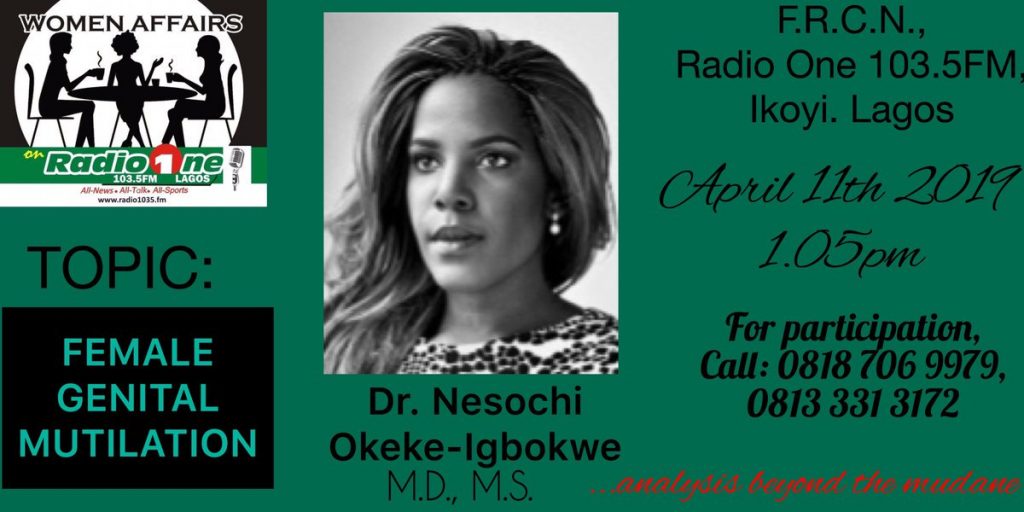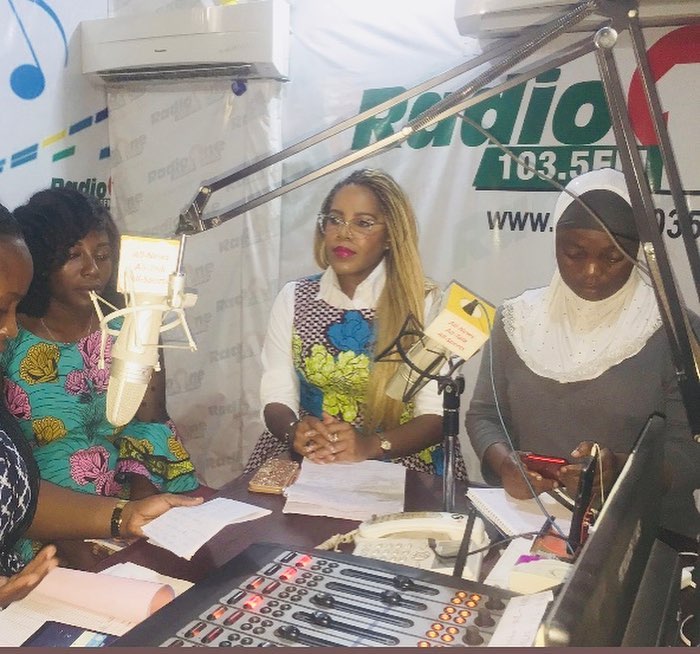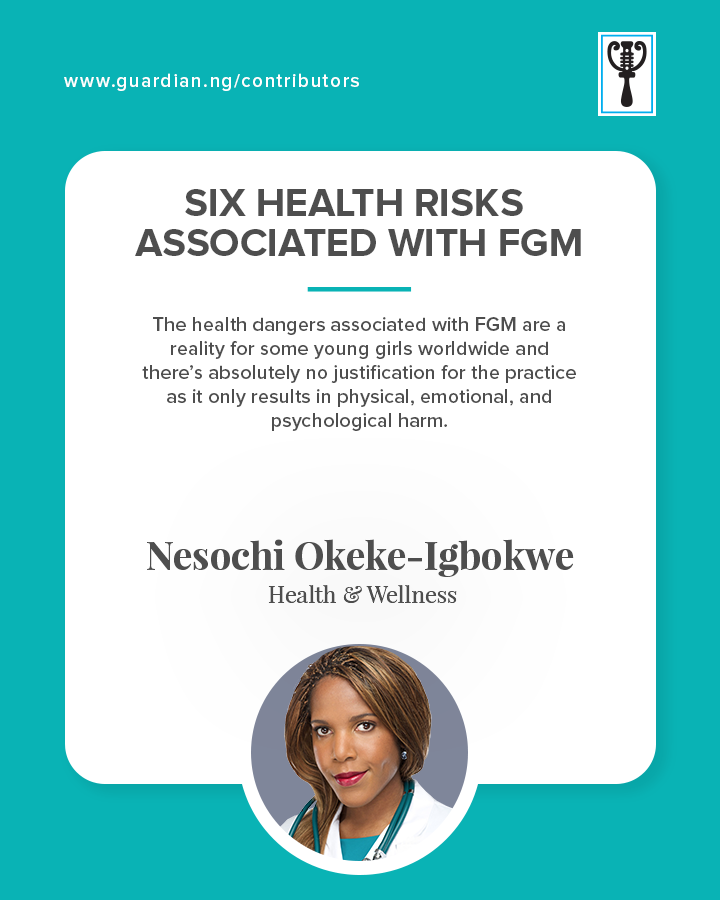
According to the United Nations , 68 million girls worldwide are at risk of female genital mutilation #FGM between 2015 and 2030. I joined the ladies of WomenAffairs on 103.5 FM Radio One to discuss the psychological and physical impact of FGM.

We honed in on the importance of raising awareness about the ongoing problem and strategies to promote a mind shift in those that continue to adhere to such traditional practices
One caller rang in and shared how she had undergone FGM earlier in life and vowed to #ENDFGM and stop the tradition with her daughter and generations to come. On the flip side, another caller buzzed in to share current strongly held beliefs about FGM and went on to comment that I should stop trying to bring a new “oyibo” tradition into #Nigeria.Needless to say, there are those who still actively believe in FGM and much needs to be done to eradicate such practices.

_____




#DrNesochi #HealthAndWellness #HumanRights #ReproductiveHealth#EndFGM #GlobalGoals
#FightViolenceAgainstWomen #FGM
Learn more about FGM in my article originally published in the Guardian:

Six health risks associated with FGM
When it comes to sexual and reproductive health, there still remain some global health challenges that prove to be major barriers in allowing all women the opportunity to live healthy lives. Female Genital Mutilation (FGM) is one such problem that is a reprehensible and cruel attack on a young girl’s body.
So what exactly is female genital mutilation and what can happen to the female body when put through such a torturous ordeal? Here is what you need to know:FGM refers to procedures with no medical or therapeutic basis in which a portion or all of a female’s external genital organs are removed using a knife, razor blade, or other unsanitary sharp objects. The World Health Organization classifies four main types of FGM: Type I refers to some or all of the removal of the clitoris. Type II refers to removal of the clitoris and sometimes all or parts of the labia minora. Type III is known as infibulation in which some or all of the external genitalia are removed and the remainder of the vulva is sewn together, leaving a tiny hole for urination. Type IV is an unclassified designation of other procedures that harm the genitals.
Global health organizations and governmental bodies have recognized the damaging effect of FGM. The health implications of the procedure are quite extensive and may lead to the following serious problems:
(1) Severe Haemorrhage
Profuse and acute blood loss is an immediate consequence of FGM procedures. The cutting or nicking of certain vessels during the procedure may lead to extreme loss of blood and subsequent damage to the vascular supply of genital organs. Uncontrolled bleeding is life threatening and hemorrhagic shock is a real possibility when so much blood is lost from the body that it compromises perfusion to vital organs. A severe class IV hemorrhage can be fatal; This means that one loses more than 40% of their blood volume, which may potentially occur in some cases of FGM.
(2) Sepsis
Sepsis is a very serious infection that travels throughout the blood stream and has the potential to cause death. When FGM occurs, especially using unsterile objects, it’s not difficult for bacteria to be introduced to the body via that route. The main signs to recognize include: fever or hypothermia, chills, fast heart rate, mental status changes, and increased respiratory rate. Sepsis requires hospitalization and may potentially progress to severe sepsis, septic shock, and eventually death if the infection is uncontrolled.
(3) Acute and Chronic Pain
Keep in mind that there are many cases of FGM performed by those with no medical training or background. There is likely no anesthetic used in these cases and the lack of anesthesia most often leads to intractable excruciating pain in these young girls. Chronic pelvic pain may also persist as a result of irreversible damage to genital tissue during the cutting procedure.
(4) Infertility/Sexual dysfunction
A 2005 study published in the Lancet journal found an association between infertility in Sudanese women who had experienced severe FGM earlier in life. Nonetheless, this research brought to light that the after effects of FGM have the potential to seriously compromise a woman’s reproductive ability.
Sexual dysfunction is another sequelae of FGM that may manifest in the form of decreased libido and inability to achieve orgasm. Some women may even experience dyspareunia, which means they have serious problems with pain during intercourse. Such problems can mar intimate relationships with a significant other throughout the course of one’s life.
(5) Clitoral or labial keloid formation:
Keloids are scar tissue that grow in abundance as a result of serious cuts or trauma to the skin. The formation of such a scar is a possibility after injury to the external genitalia from FGM. Those who are already predisposed to keloids, may experience this proliferation of tissue where the genitalia is cut during a FGM procedure.
(6) Increased risk of mental health disorders:
The psychological and emotional trauma associated with FGM can scar a victim for life.The torment a young girl may experience can be so grueling that there’s potential for the development of post traumatic stress disorder in which she experiences flashbacks of the trauma of being held down against her will and mutilated. Anxiety disorders, major depressive disorders, and sometimes even suicidal ideation can also be mental health sequelae of FGM.
Here is the bottom line: The health dangers associated with FGM are a reality for some young girls worldwide and there’s absolutely no justification for the practice as it only results in physical, emotional, and psychological harm. Ultimately, there needs to be a major shift in some traditionally held ancestral beliefs about FGM to totally eradicate it. All girls must be protected from this dangerous practice. All young women deserve an opportunity for a bright and healthy future!


